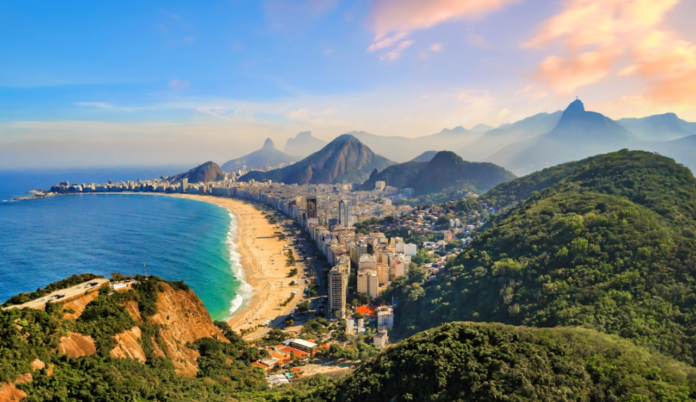If you’re planning a trip to Brazil anytime soon, you might want to take some extra precautions before you go.
The U.S. State Department updated its travel advisory to Brazil, advising travelers to take extra precautions due to crime and kidnapping risks.
Here’s what you need to know if you plan on traveling to Brazil.
What does the latest travel advisory for Brazil mean for you?
| Item | Detail |
|---|---|
| Start Date | May 29, 2025 |
| What’s changing | Updated travel advisory warning travelers to “exercise increased caution” due to crime and kidnapping |
| What will happen? | Travelers should be aware of their surroundings, not physically resist any robbery attempts, not accept food or drinks from strangers, avoid going to bars or nightclubs alone and avoid walking on beaches after dark. Travelers should also develop a communication plan with family, employers or host organizations depending on the reason for travel if they plan on traveling to high-risk areas. Buying travel insurance is also strongly recommended. |
| Who will it affect? | Travelers to Brazil |
The agency gave a “Level 2: Exercise Increased Caution” advisory to Brazil because of crime and kidnapping risks.
There are certain sites where visitors to Brazil should not travel, including:
- anywhere within 160 kilometers or 100 miles of Brazil’s land borders with Bolivia, Colombia, Guyana, French Guiana, Paraguay, Peru, Suriname and Venezuela. Popular tourist sites, such as Foz do Iguacu National Park or Pantanal National Park, don’t fall under this category.
- informal housing developments, such as favelas, vilas, comunidades or conglomerados, at any time
- Brasilia’s “Satellite Cities” at night, including Ceilandia, Santa Maria, Sao Sebastiao, and Paranoa
The advisory states that crime, especially violent crime, is common in the country. These crimes include murder, armed robbery and carjacking, and occur day and night in urban areas.
Gangs and organized crime are widespread throughout the country.
In Rio de Janeiro, there is a trend where drugs and sedatives are placed in drinks.
Criminals often target foreigners using dating apps or by luring them at nightlife venues before drugging them and robbing them.
What is the highest travel advisory?
There are four levels of travel advisory, Level 1 through Level 4.
When planning a vacation, you should check the current travel advisory for that destination. So, which level is the most concerning?
- Level 1: Exercise Normal Precautions – This is the lowest level of advisory; it is advised that there is some risk in that area, and travelers should take precautions while on their visit.
- Level 2: Exercise Increased Caution – There is a heightened risk for safety and security in that area, and travelers need to take extra caution.
- Level 3: Reconsider Travel – There are serious risks to safety, and travelers are advised to reconsider their travel plans to this destination.
- Level 4: Do Not Travel – This is the highest level of advisory, and it is strongly recommended not to travel to any destinations with a Level 4 advisory, due to many factors, one of which is that the U.S. government might not be able to provide travelers any assistance in the event of an emergency.
What should travelers to Brazil do in light of this travel advisory?
The U.S. State Department warns travelers who are planning to travel to Brazil to do the following:
- Be aware of their surroundings.
- Don’t resist any robbery attempt.
- Don’t accept food or drinks from strangers.
- Avoid going to bars or nightclubs alone.
- Avoid walking on beaches after dark.
- Develop a communication plan with family, employers or host organizations depending on the reason for travel if planning on traveling to high-risk areas.
One of the suggestions from the State Department is to get travel insurance before traveling to a country with a high-level travel advisory. The State Department recommends medical evacuation insurance, travel health insurance and trip cancellation insurance.
The State Department also suggests enrolling in the Smart Traveler Enrollment Program (STEP) to get alerts and make it easier to locate you in an emergency and prepare a contingency plan for emergency situations using the Traveler’s Checklist.
You can find out more about the travel advisory to Brazil on the State Department website.
Our journalism needs your support. Please subscribe today to NJ.com.
Katherine Rodriguez can be reached at krodriguez@njadvancemedia.com. Have a tip? Tell us at nj.com/tips.






